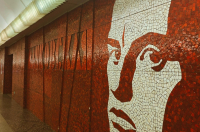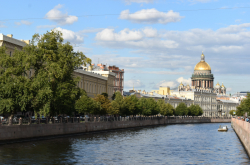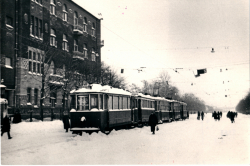Staff of life
According to an old Russian proverb, bread is the staff of life (хлеб – всему голова). For centuries, it’s been a key part of the local food pyramid. But it wasn’t quite like the bread we see in supermarkets today. Baking it from scratch was akin to a special ritual – and you can learn all about it at St. Petersburg’s Museum of Bread. Among its expositions are a replica of a Russian stove, interiors of bakeries and bread-making factories, as well as an exhibition dedicated to the Siege of Leningrad, during which bread quite literally saved lives.
Lives of the greats
You can also explore carefully preserved or recreated households by visiting one of the city’s many apartment museums. St. Petersburg isn’t called the cultural capital for nothing: it feels like every important figure of Russian history lived here at some point.
Such museums allow you to kill two birds with one stone (or two rabbits with one shot, as we say in Russia). On one hand, you get to learn about the person(s) who lived there, and on the other, to see for yourself what life was like back in their day in general.
Check out our guide to writers' museum apartments here – it covers locations related to the poet Anna Akhmatova, the Golden Age authors Fyodor Dostoevsky and Alexander Pushkin, and the Soviet writer Sergei Dovlatov.
Those who have a soft spot for arts should pay a visit to the famous landscape painter Arkhip Kuindzhi’s Memorial Apartment Museum. There, you will not only enjoy a collection of works by the master himself and his prominent students, but also see how exactly his living room and working studio looked in detail – for example, you’ll find out why the painter needed a microscope for his work.
By my rough estimates, there are at least a dozen museums dedicated to Vladimir Lenin all over Russia. But the oldest one, opened in 1927, is located in St. Petersburg. It’s called the Apartment Museum of the Yelizarov Family.
Why Yelizarov and not Lenin? The thing is, it was rented by the family of Lenin’s sister, Anna Yelizarova-Ulyanova. She was also the one who founded the museum. Vladimir Lenin and his wife Nadezhda Krupskaya lived here after returning to Soviet Russia from political exile.
The building on the Petrogradskaya Side is remarkable in itself, and inside you can find a collection of over 200 items that belonged to the revolutionary’s family and provide insight into the everyday life of early 20th-century Russia overall.
Outside the city
About 70 km south from St. Petersburg, right by the highway, there is a village called Vyra, famous for being an inspiration for one of Alexander Pushkin’s novels, The Stationmaster. What makes the Stationmaster’s House museum special is that it’s not so much a recreation as a restoration – the station really was there and Pushkin had been there many times. Your visit there would start with going through massive wooden gates – you’ll know right away that you’re about to visit a historic place. Both the interior and the exterior are in tune with its original spirit.
Among other interesting places in Leningrad Oblast’ are the Historical and Ethnographic Museum Yalkala dedicated to life at the Karelian Isthmus and Izhorian Ethnographic Museum displaying the everyday life and culture of Izhorians.
St. Petersburg is home to dozens of fascinating museums. In our previous stories, you can find info on some of their must-see exhibits and paintings.




